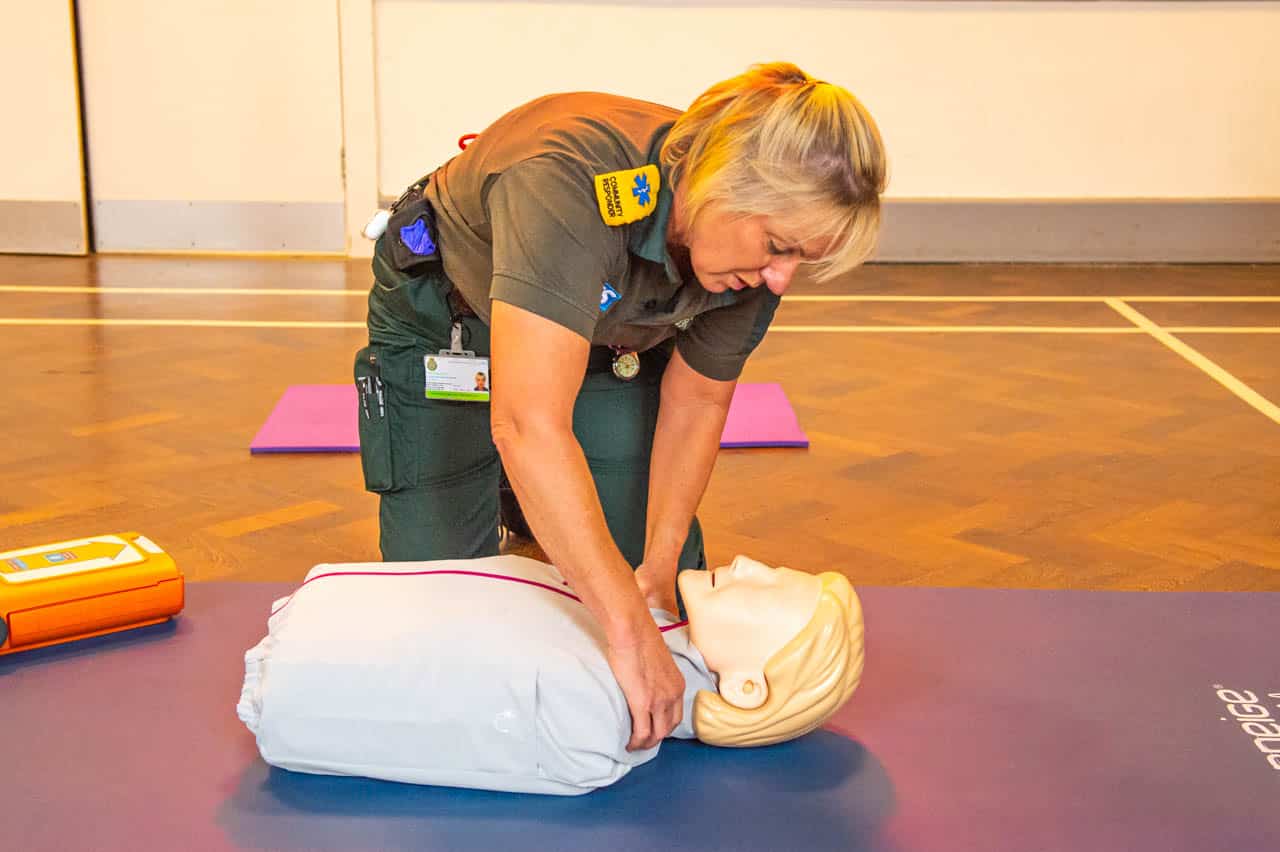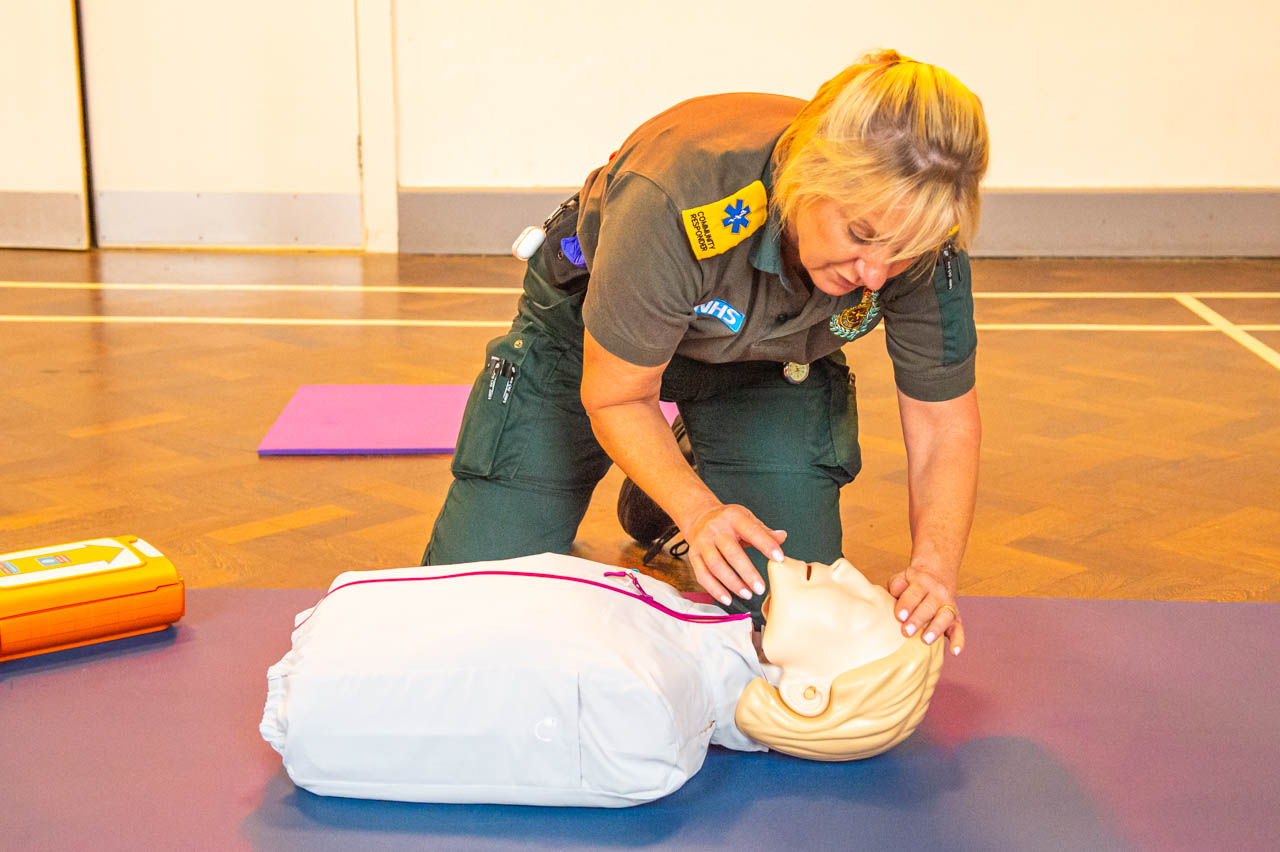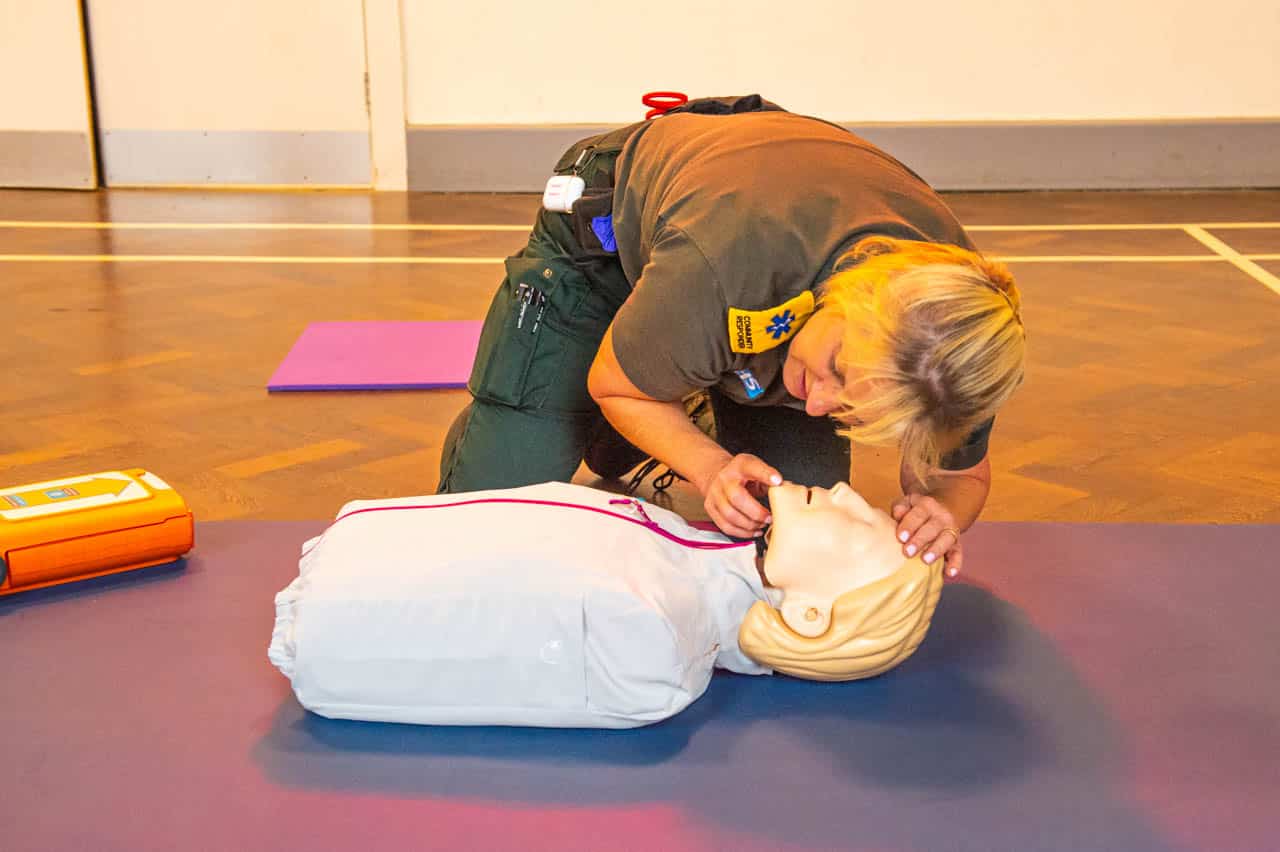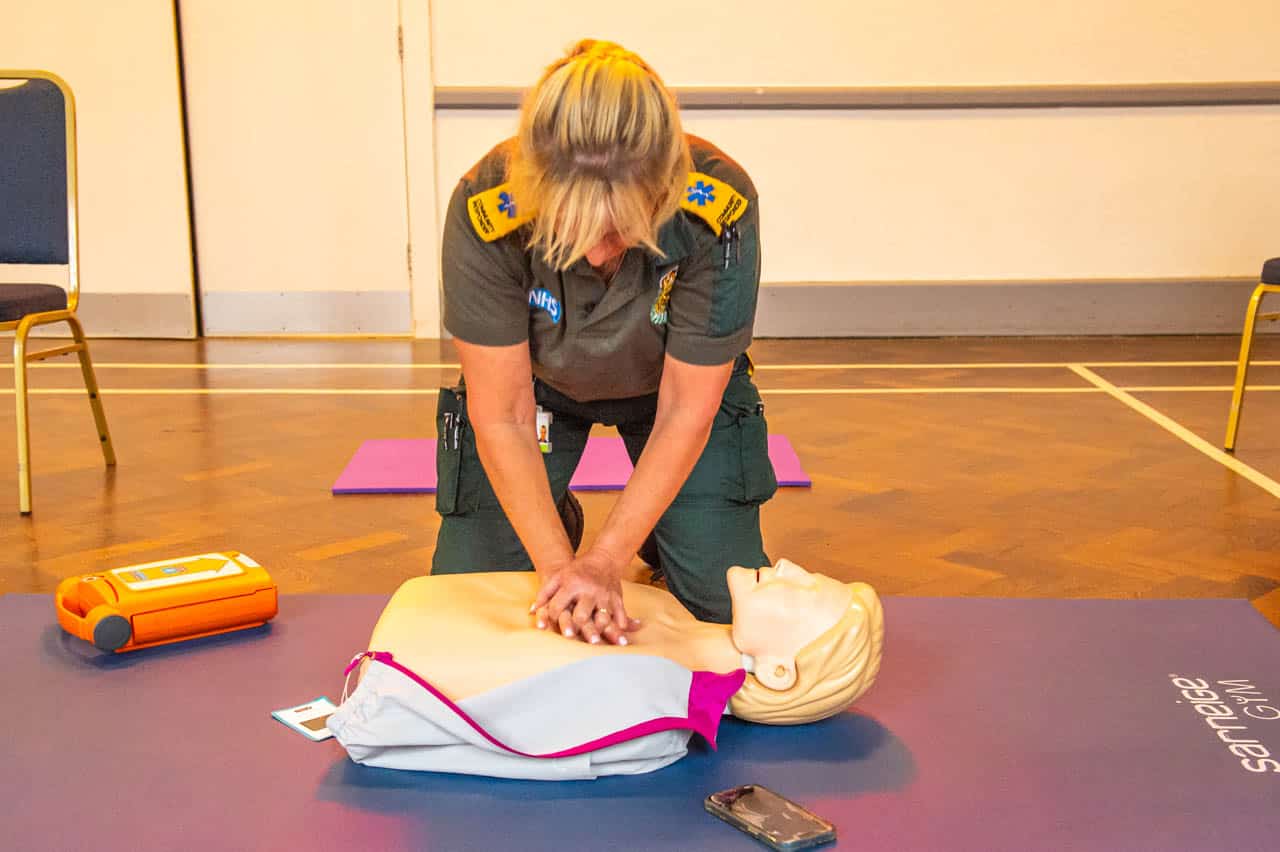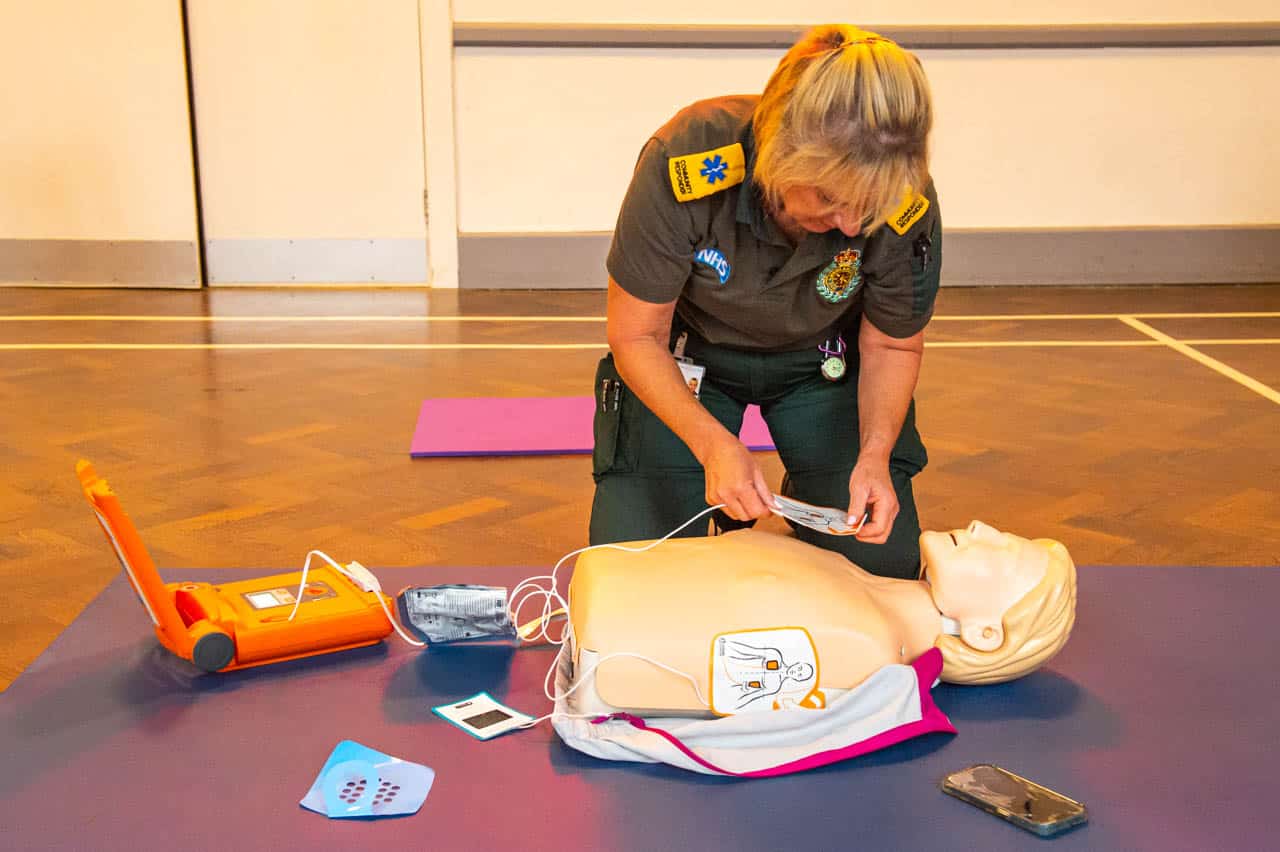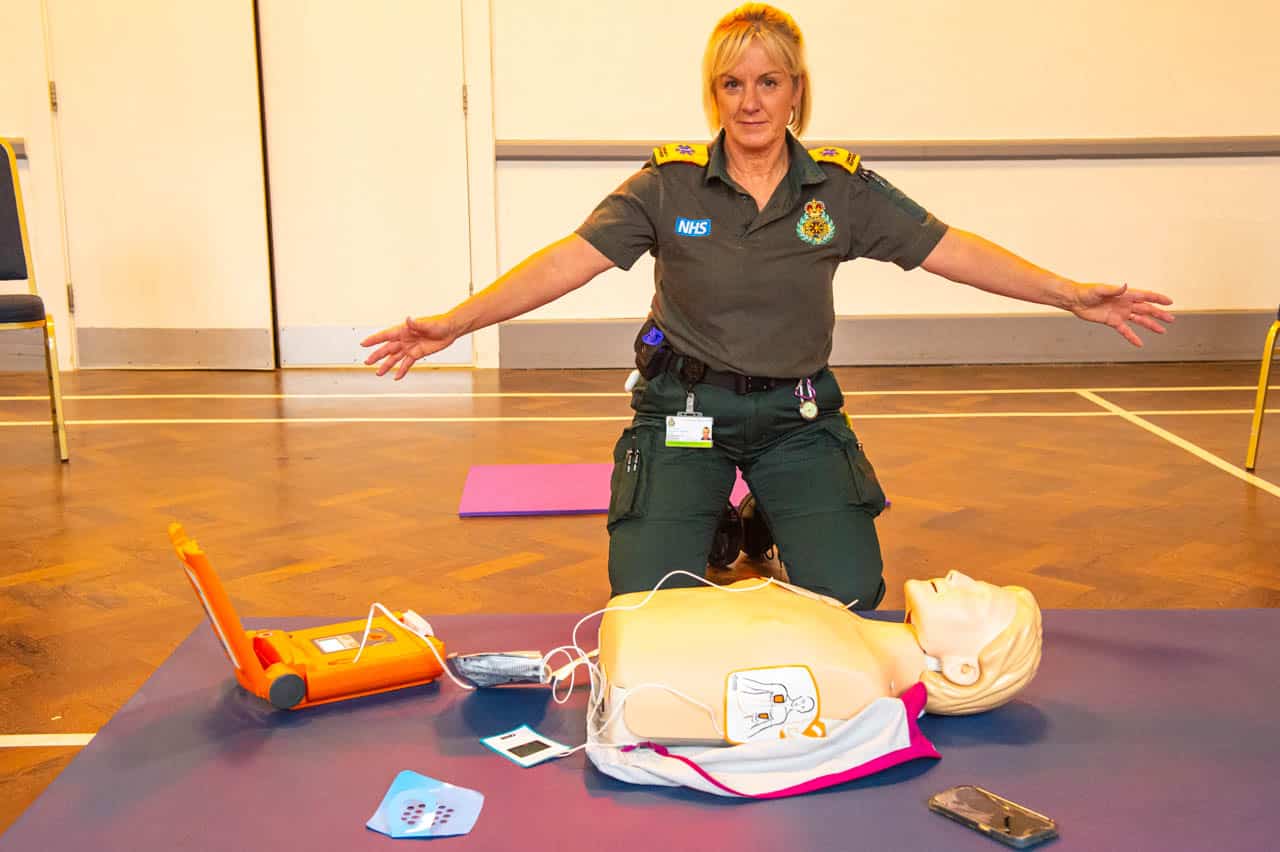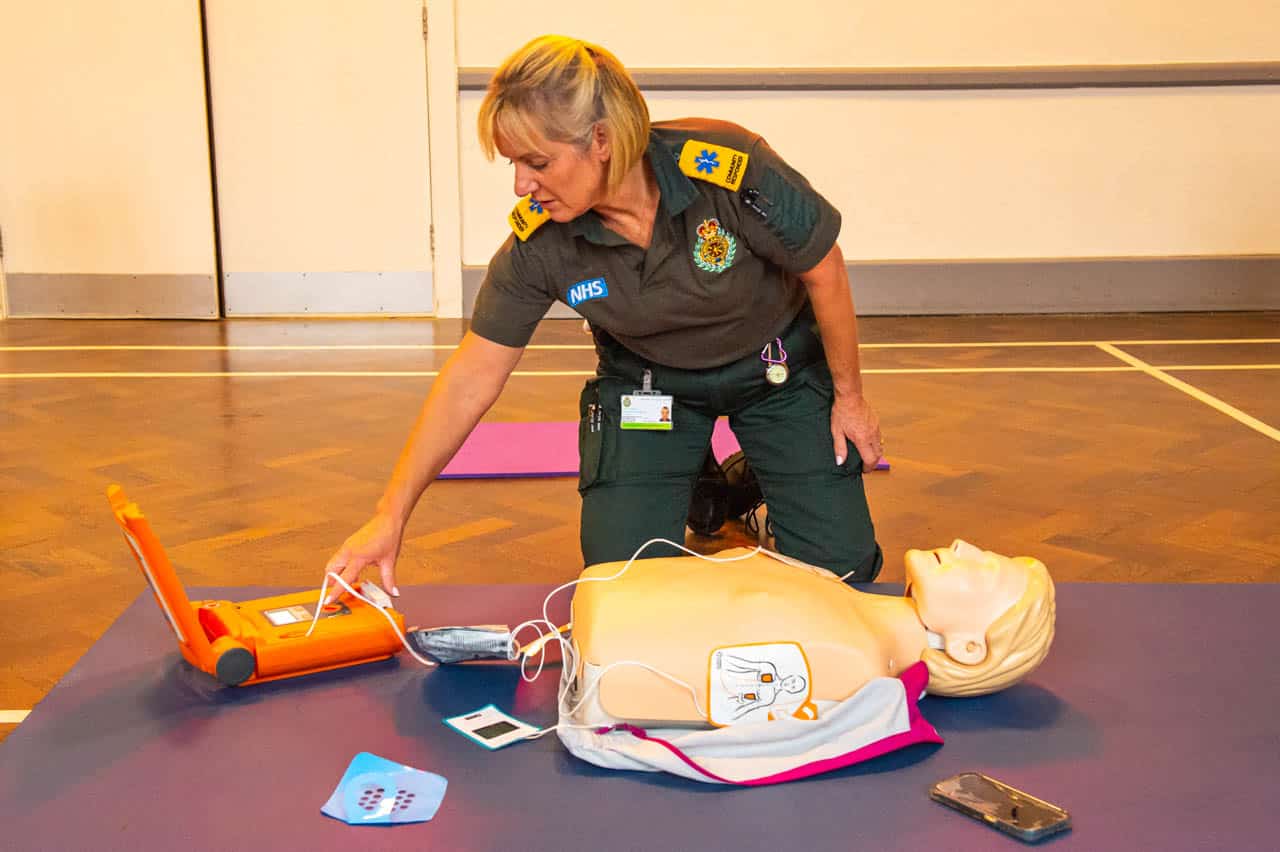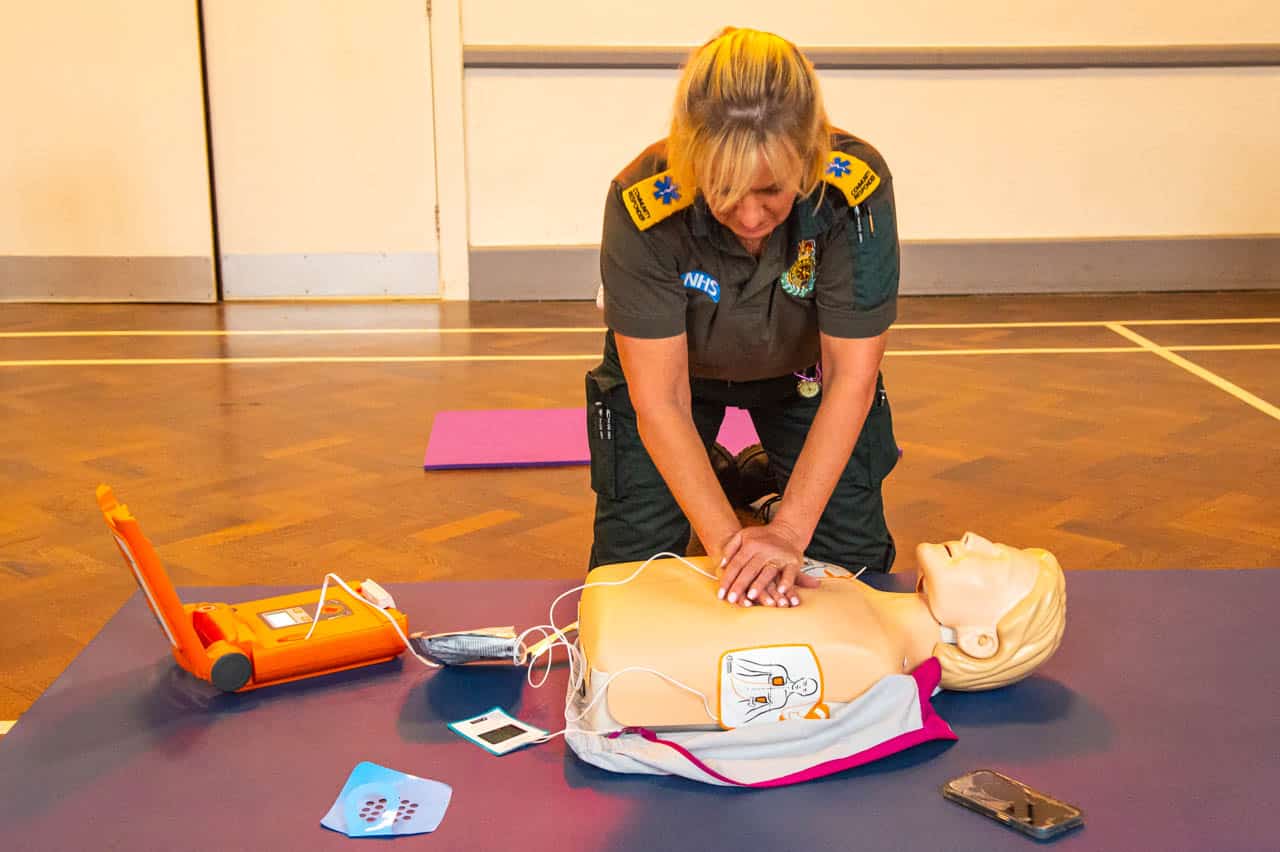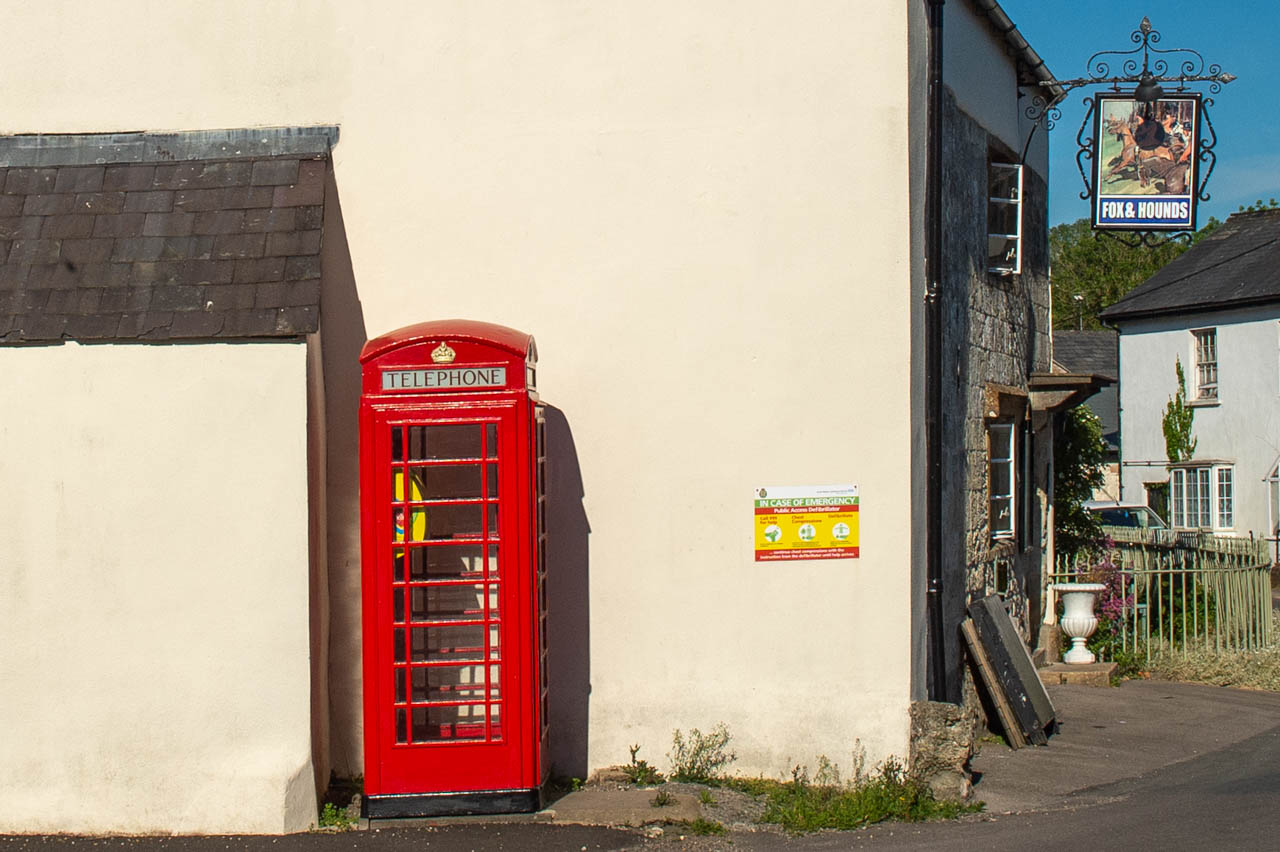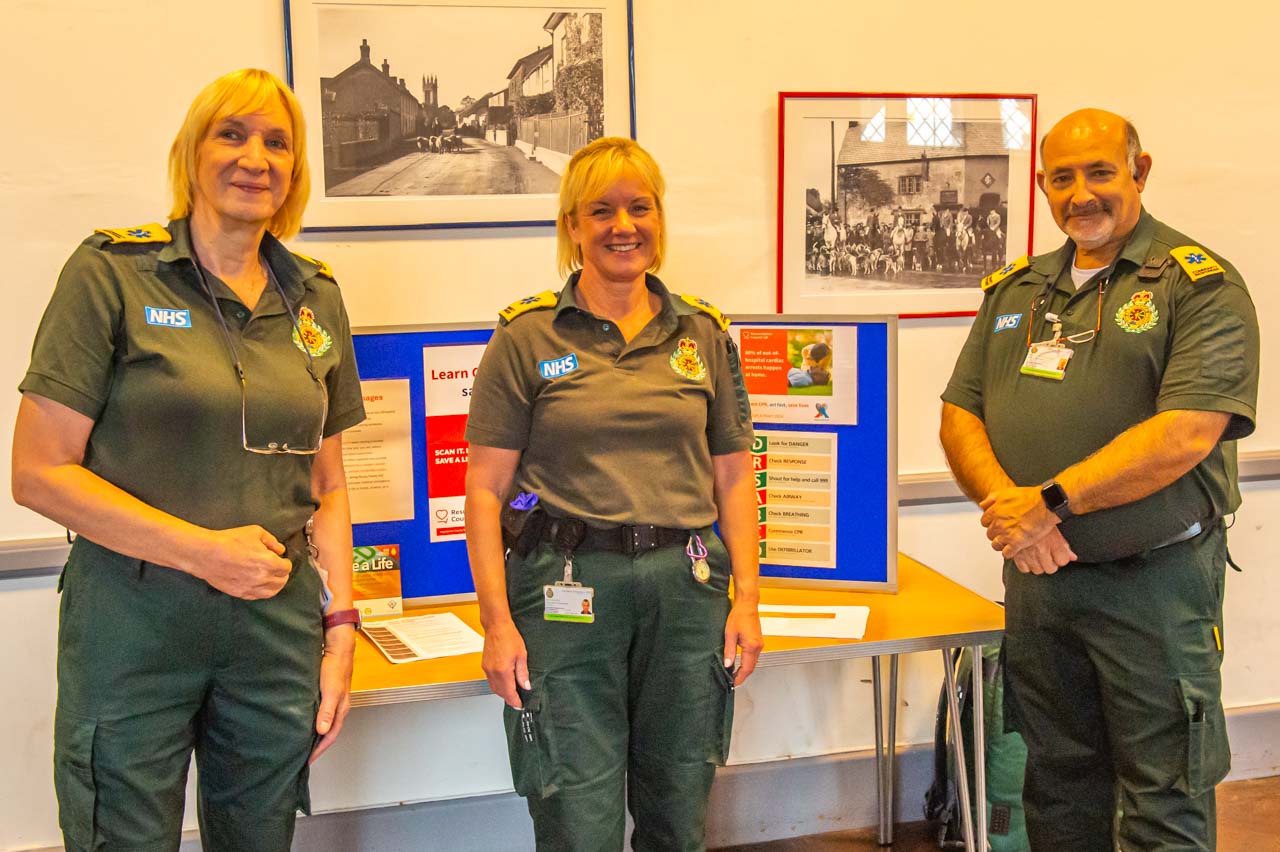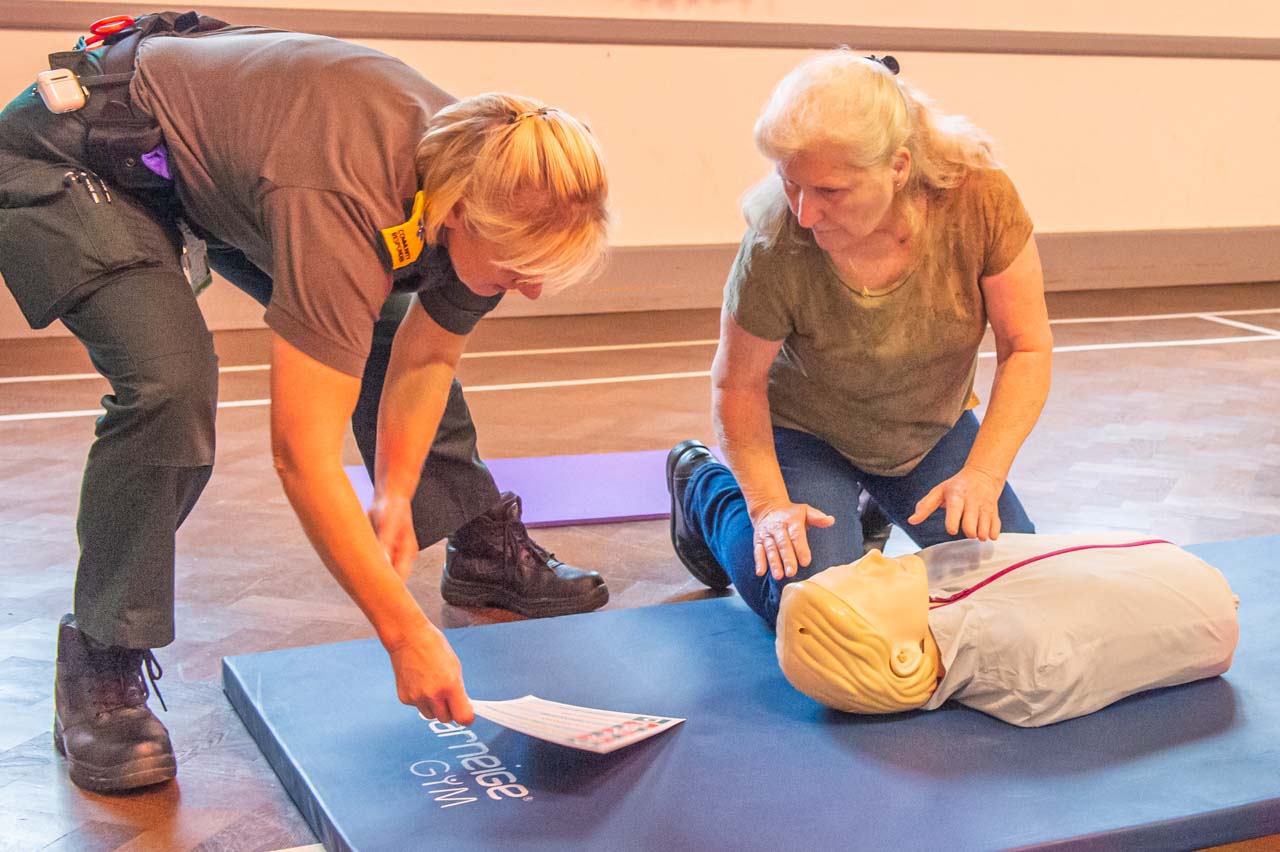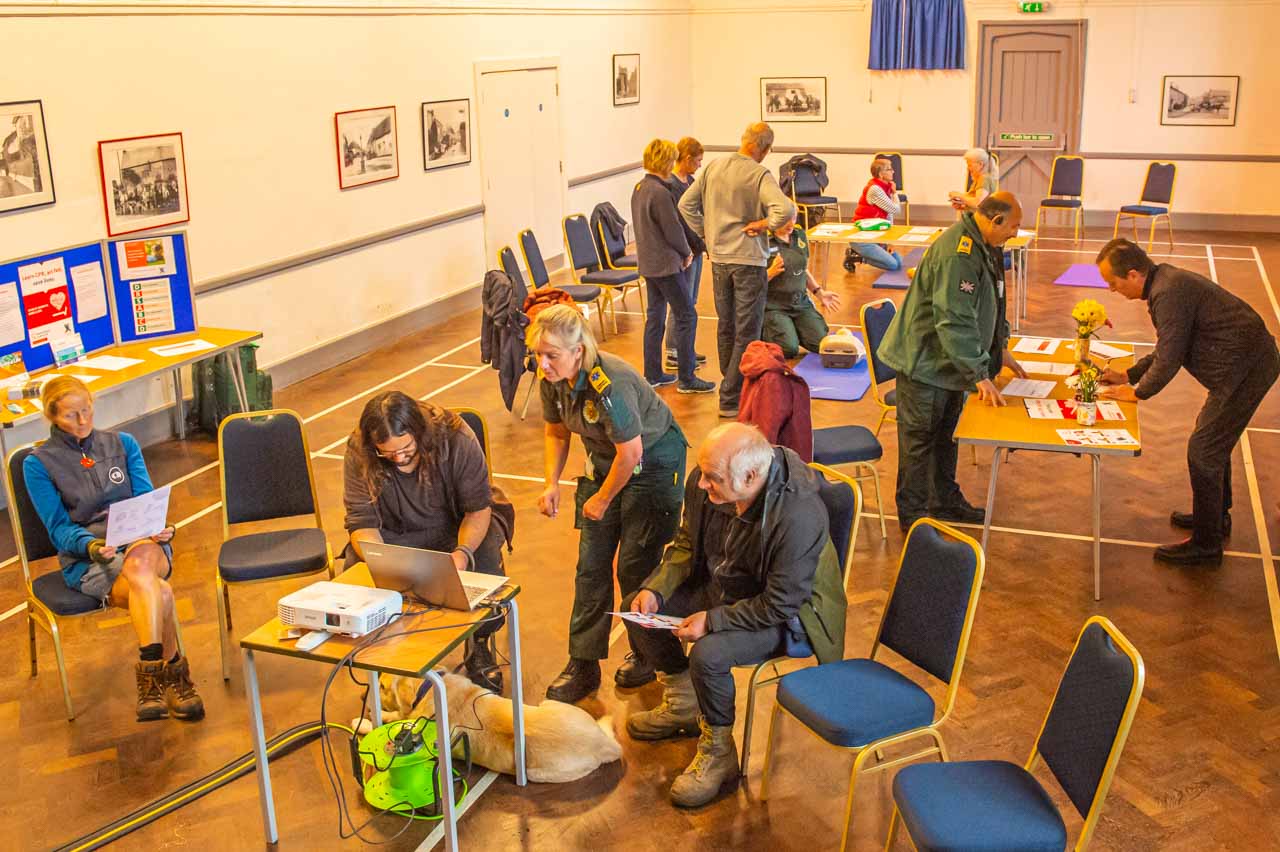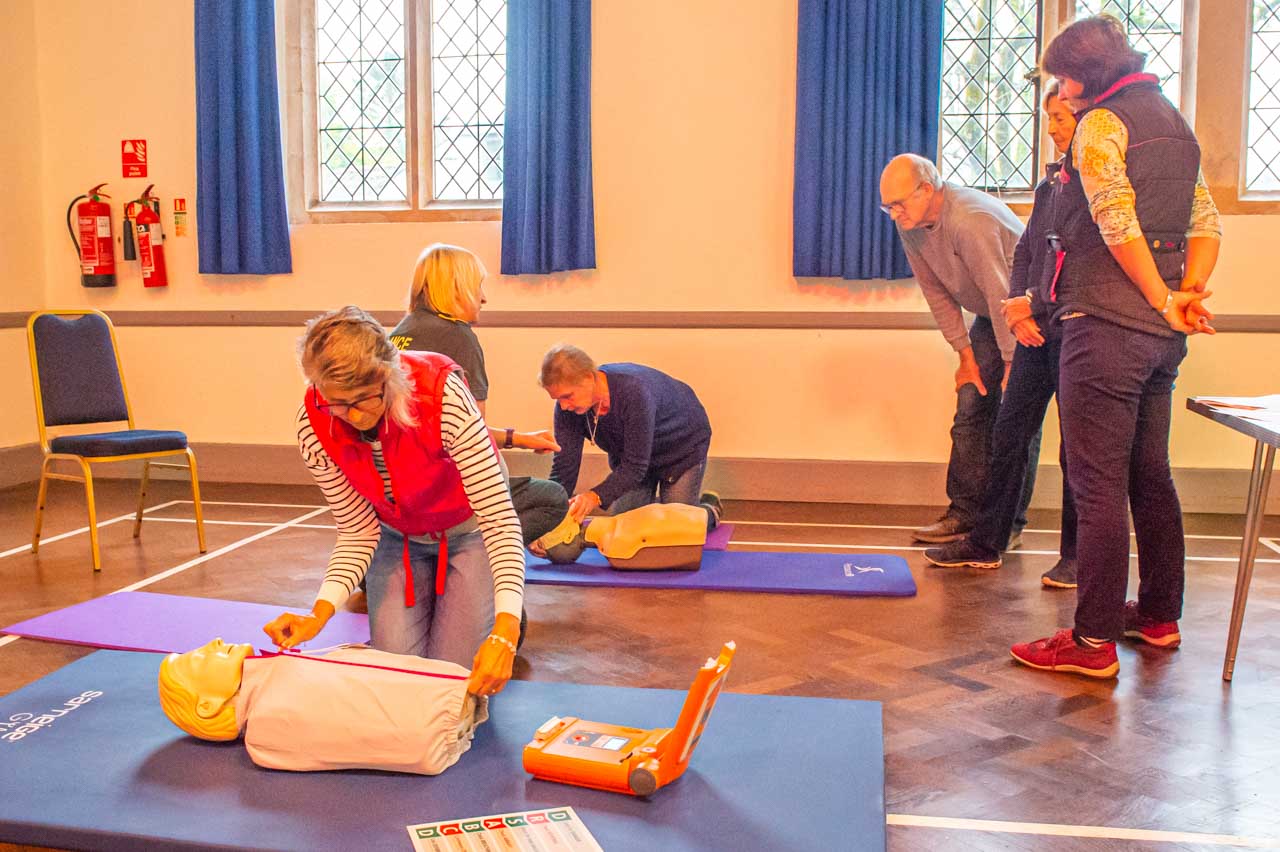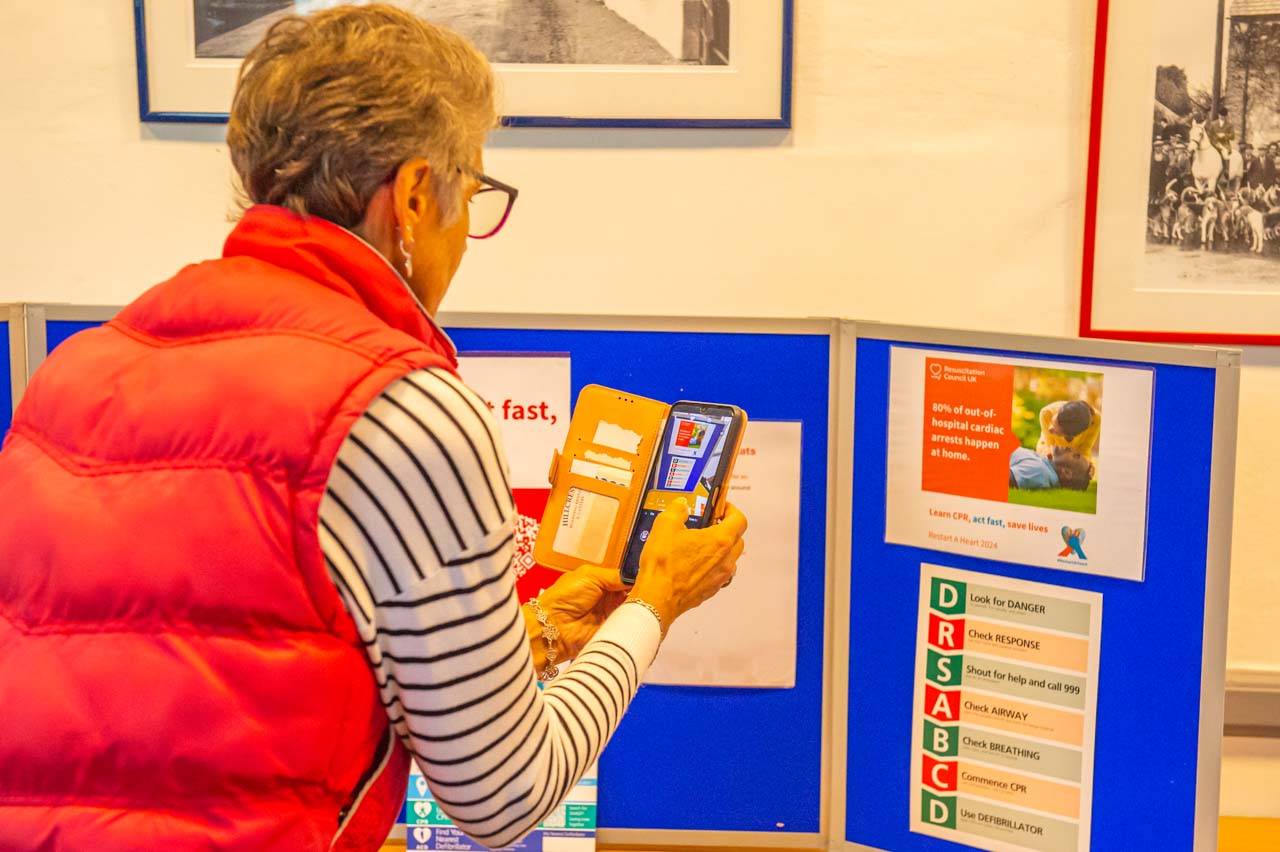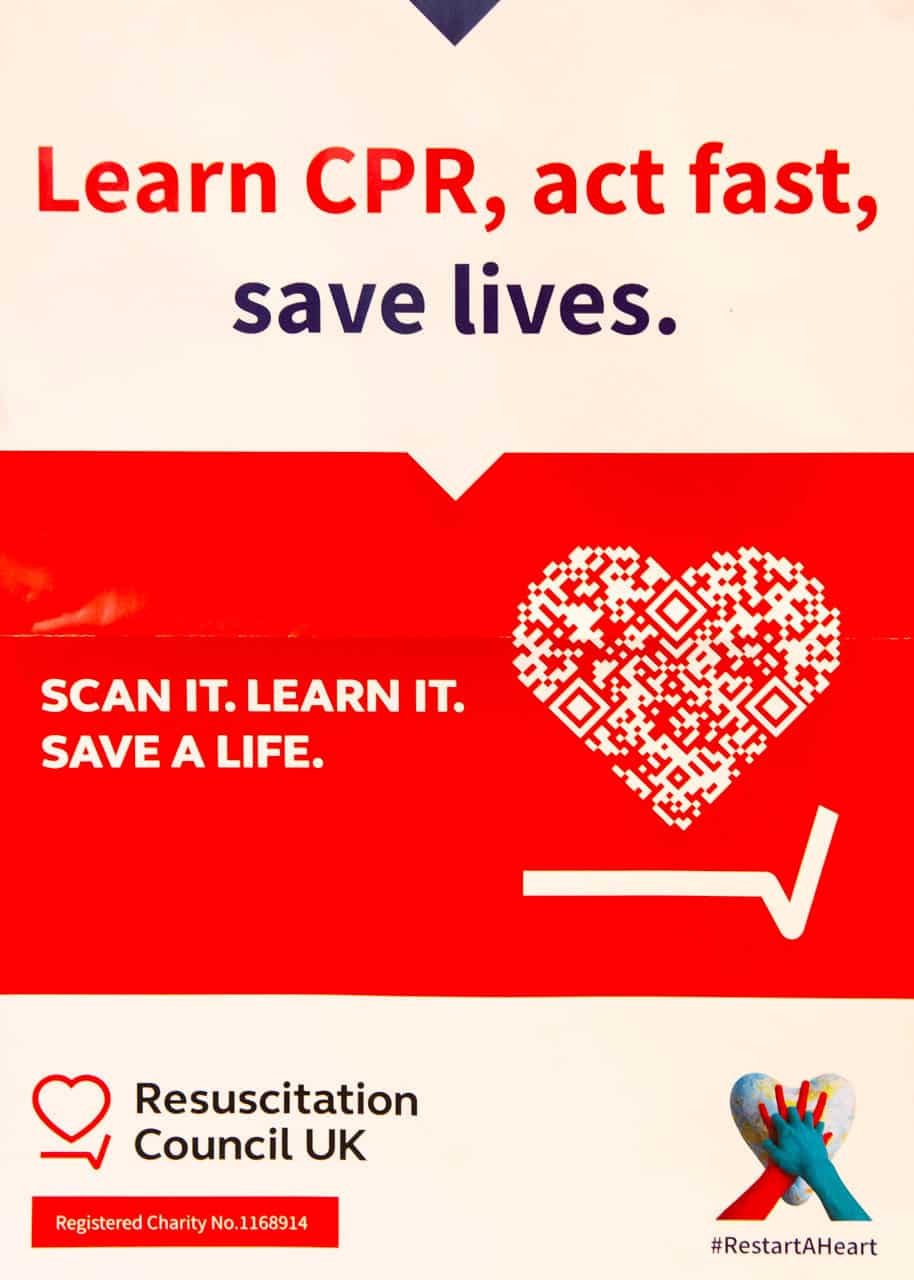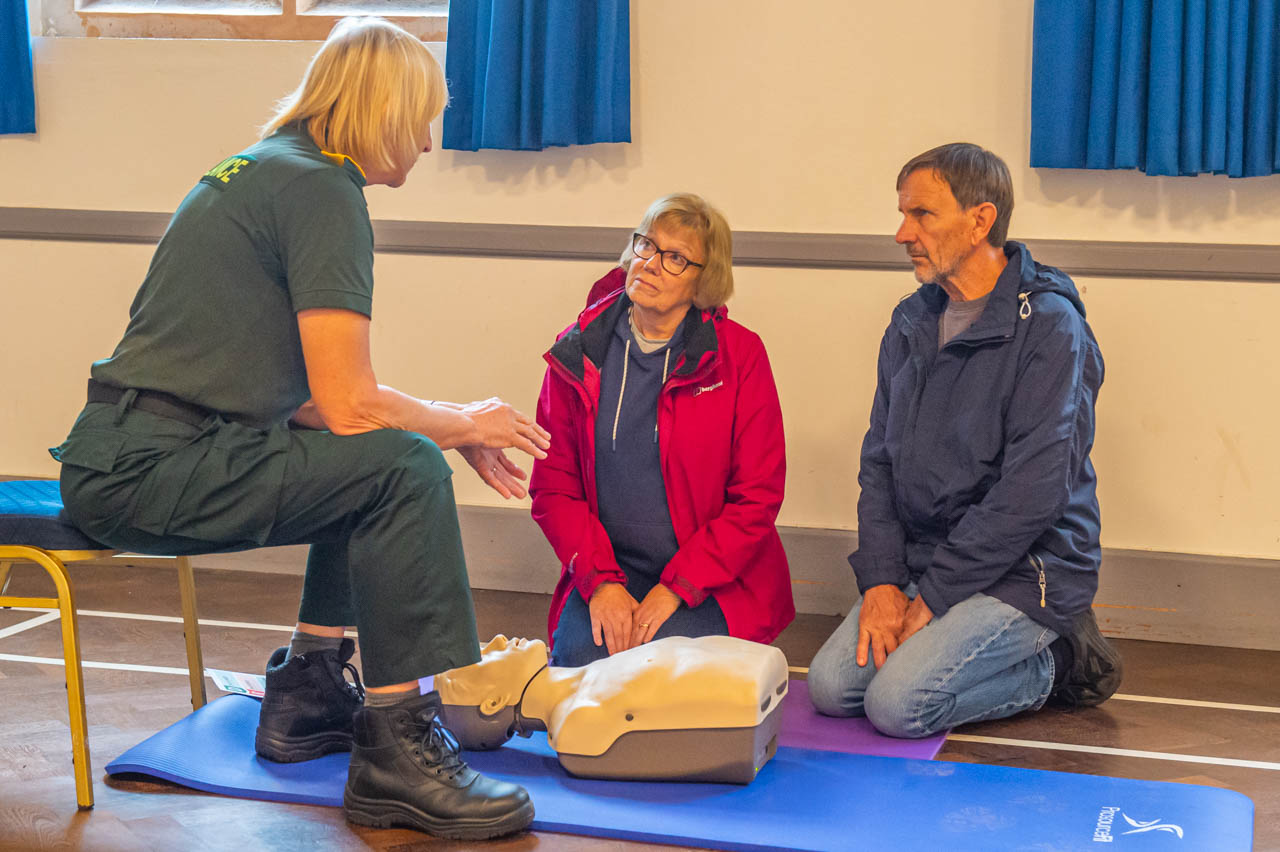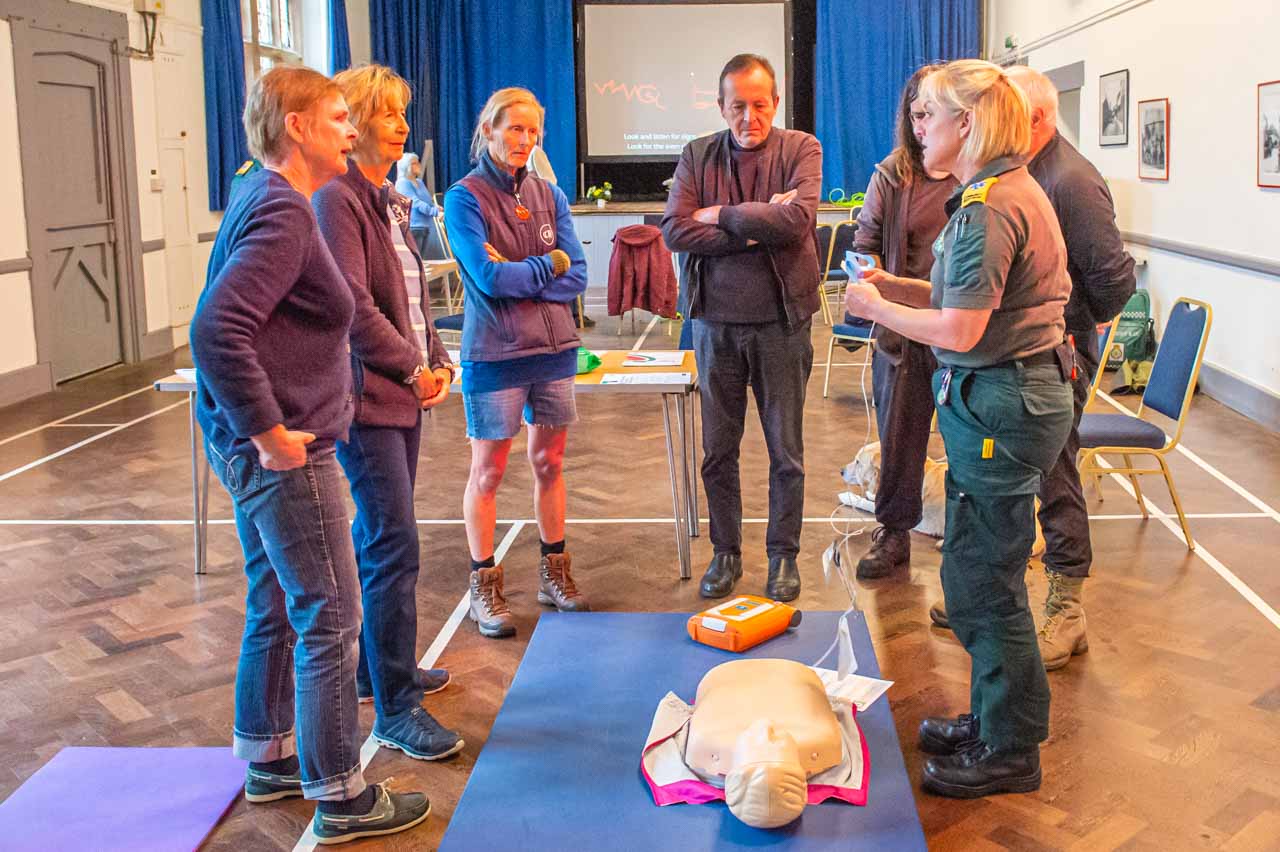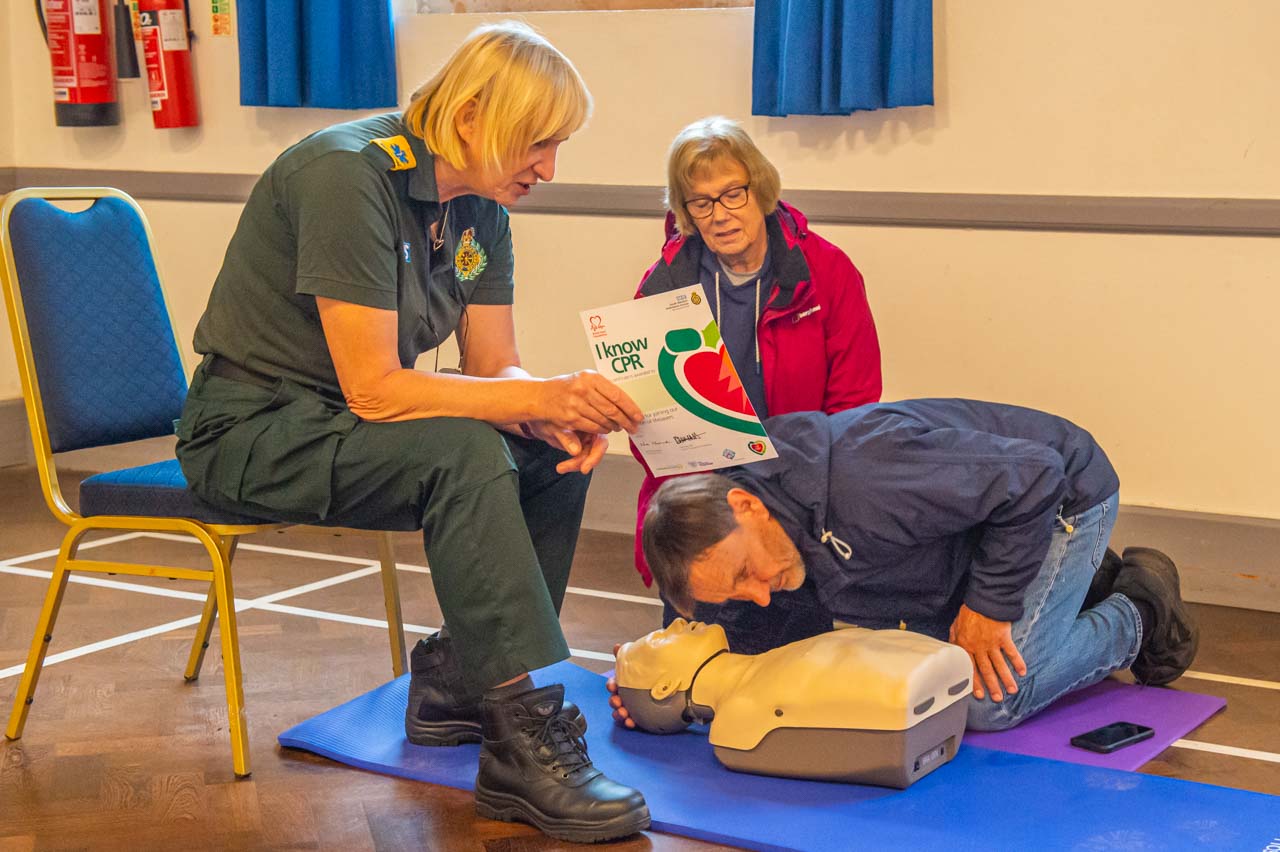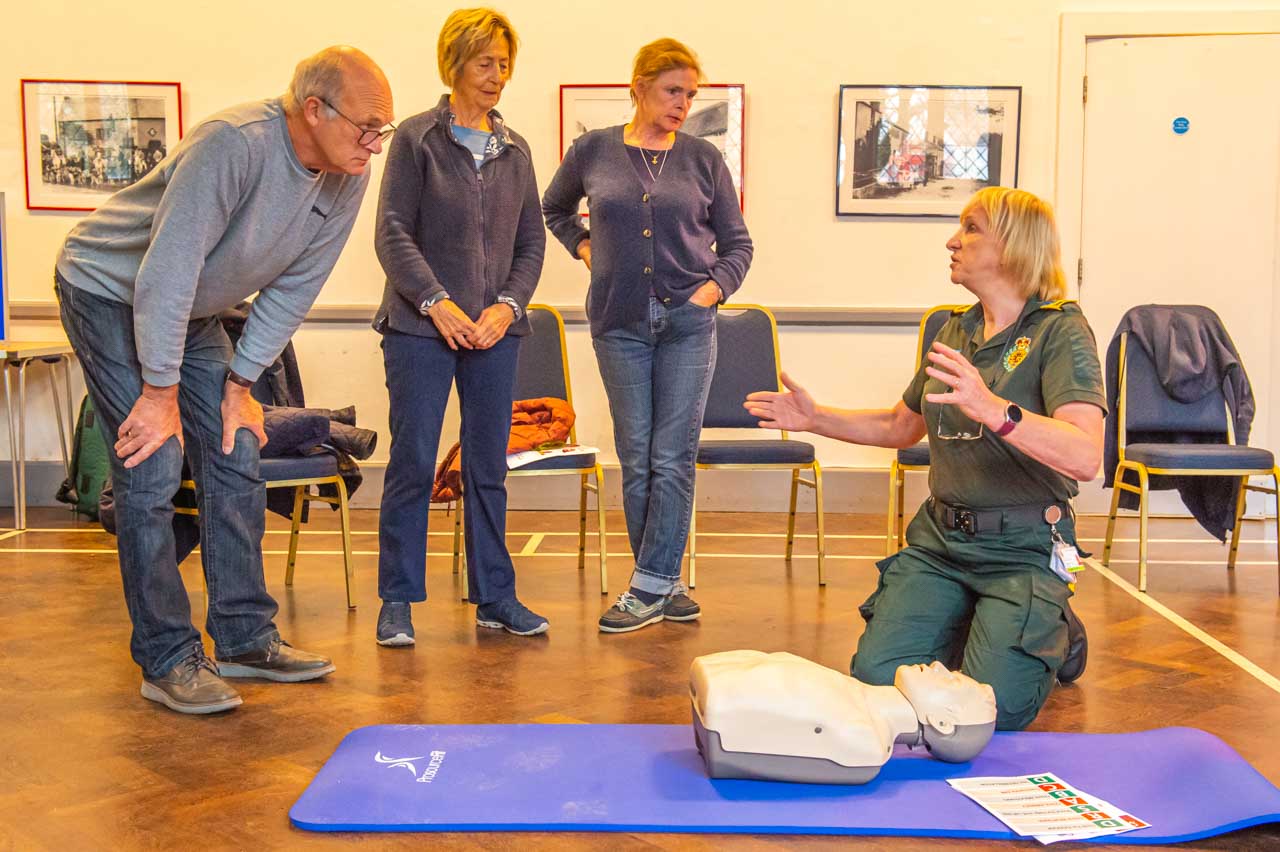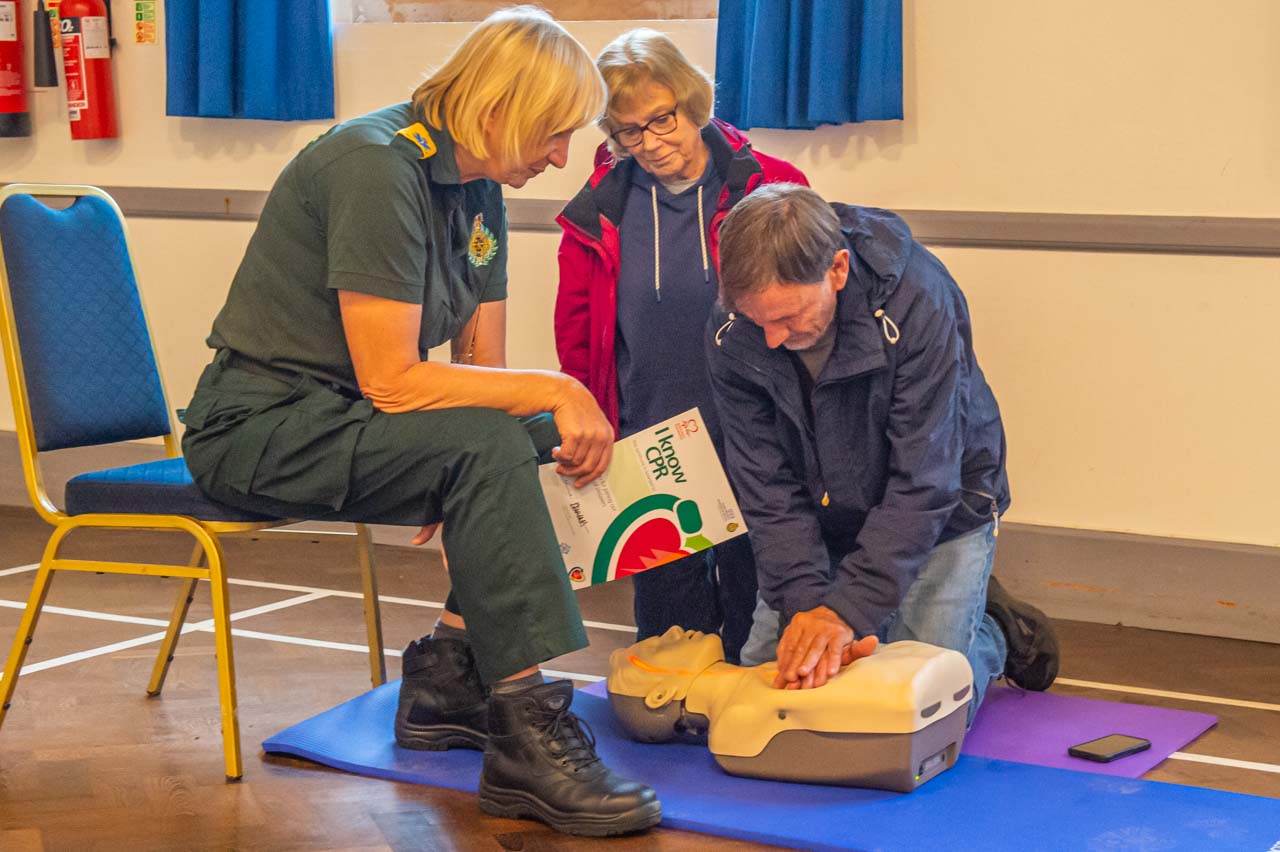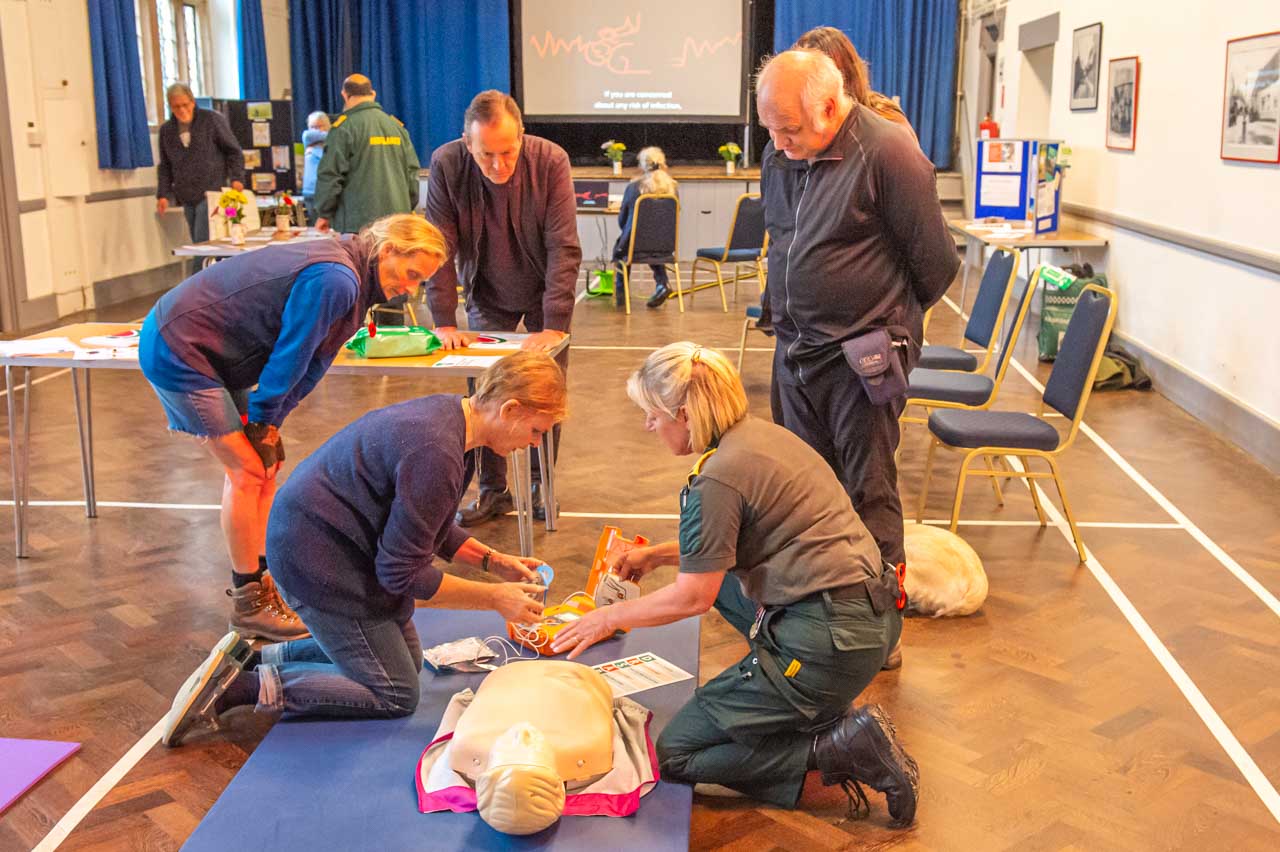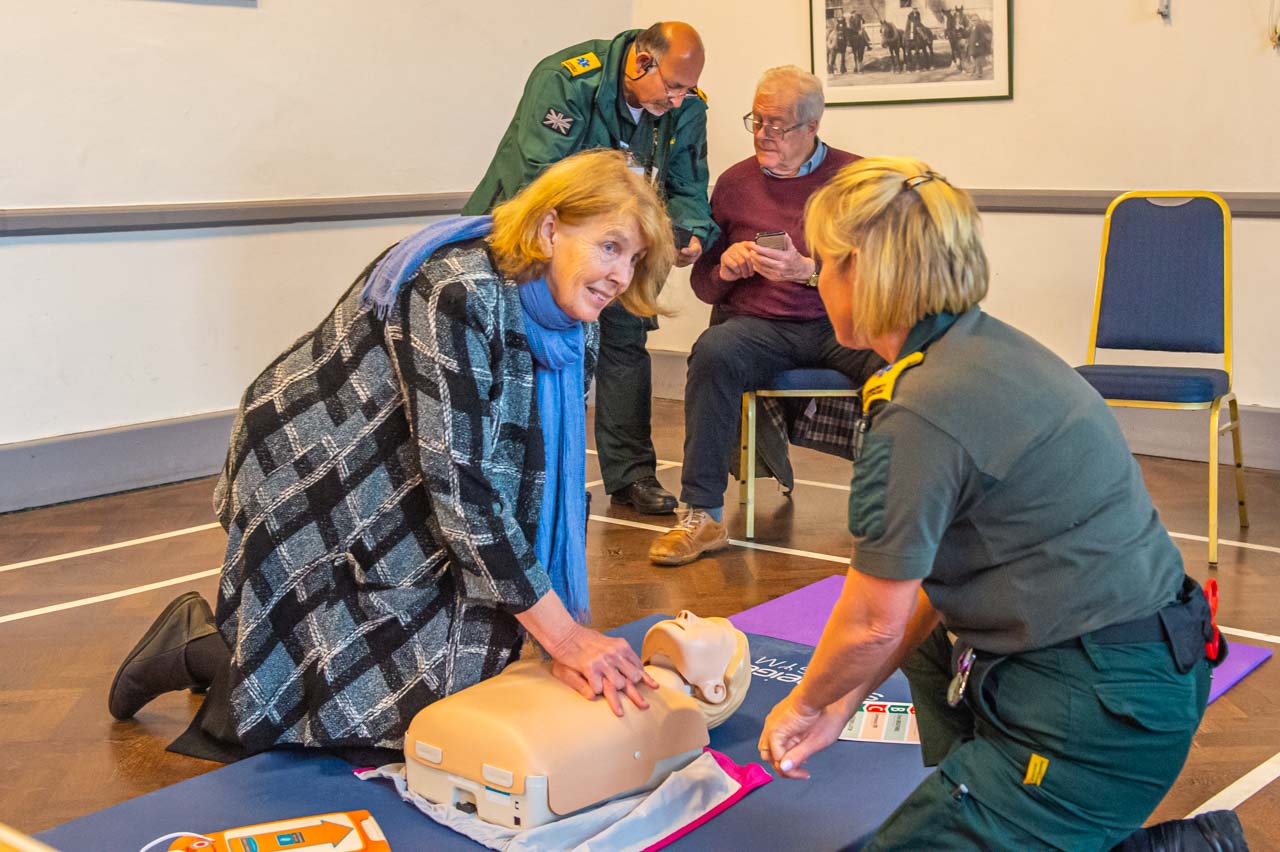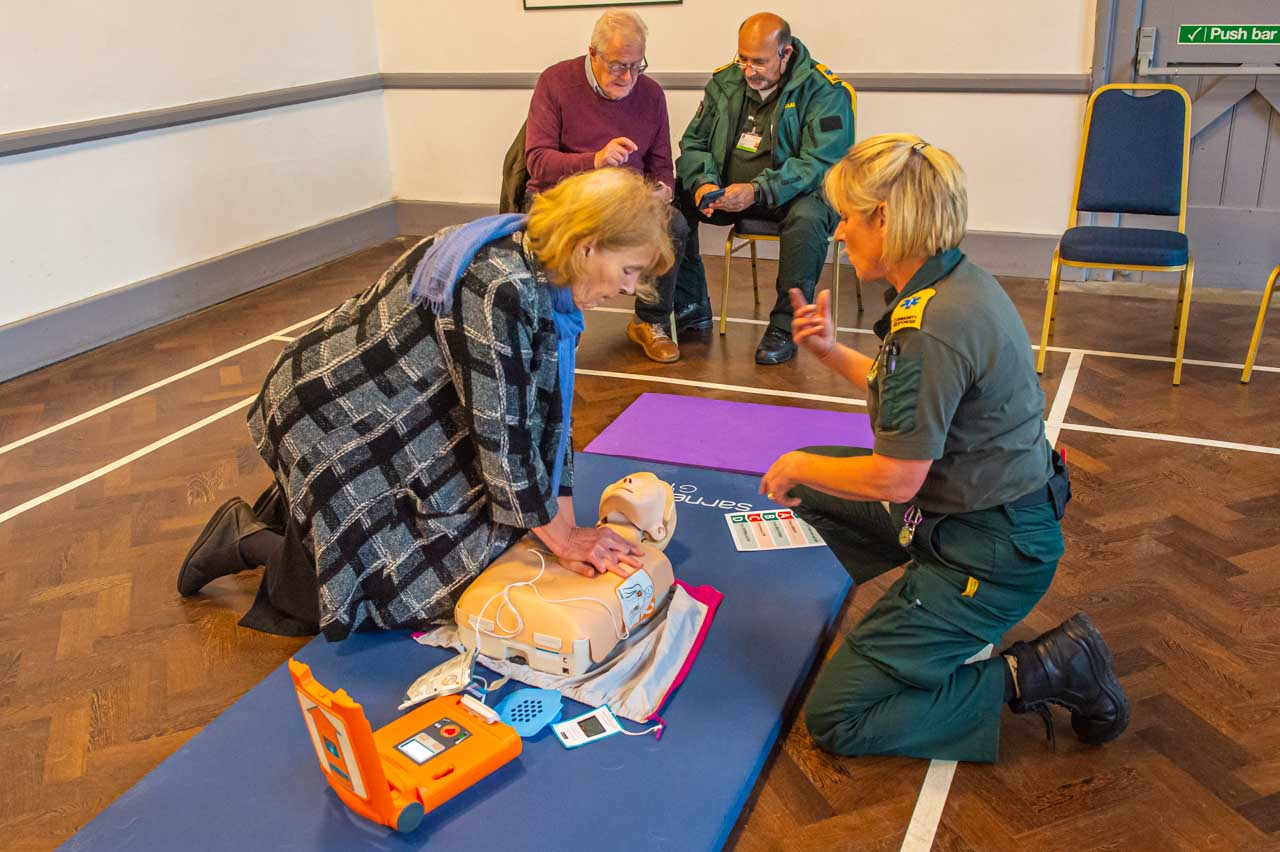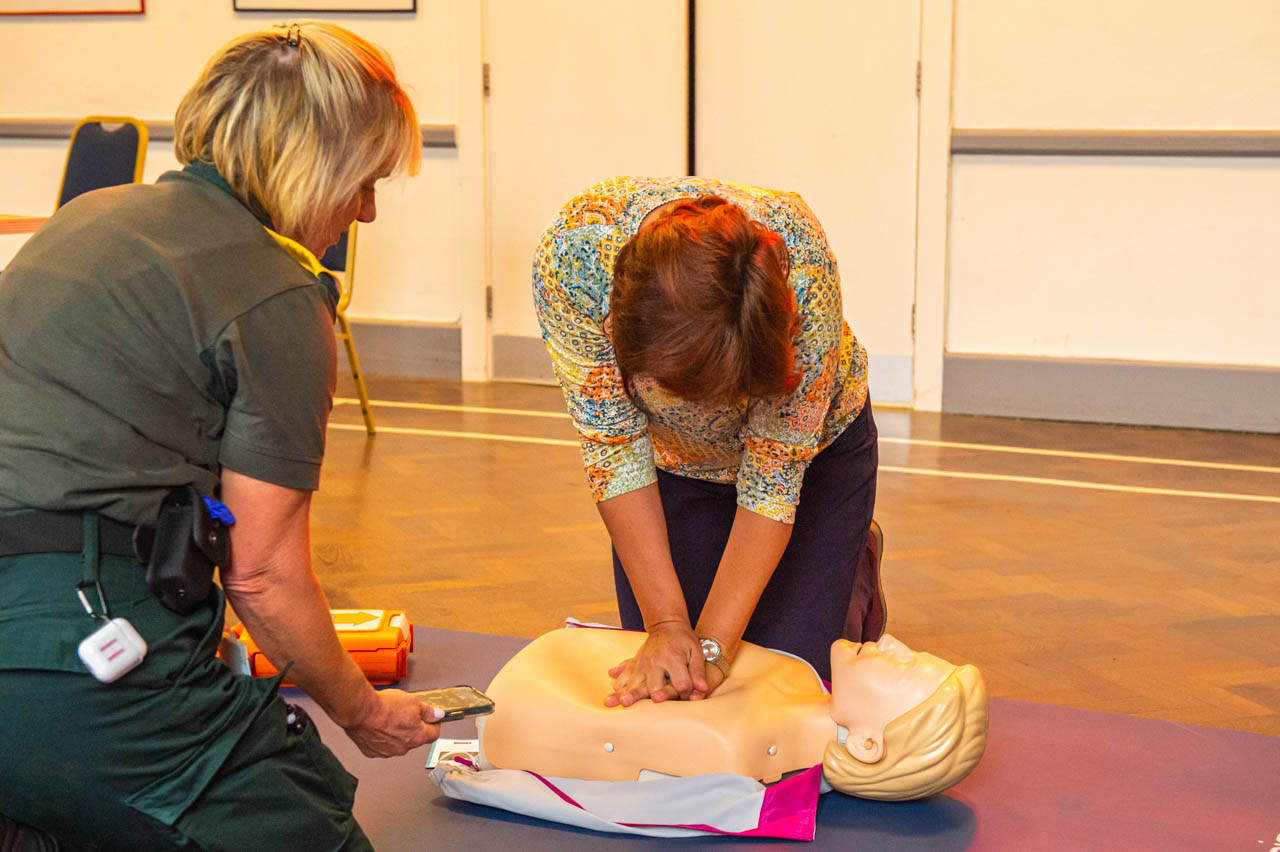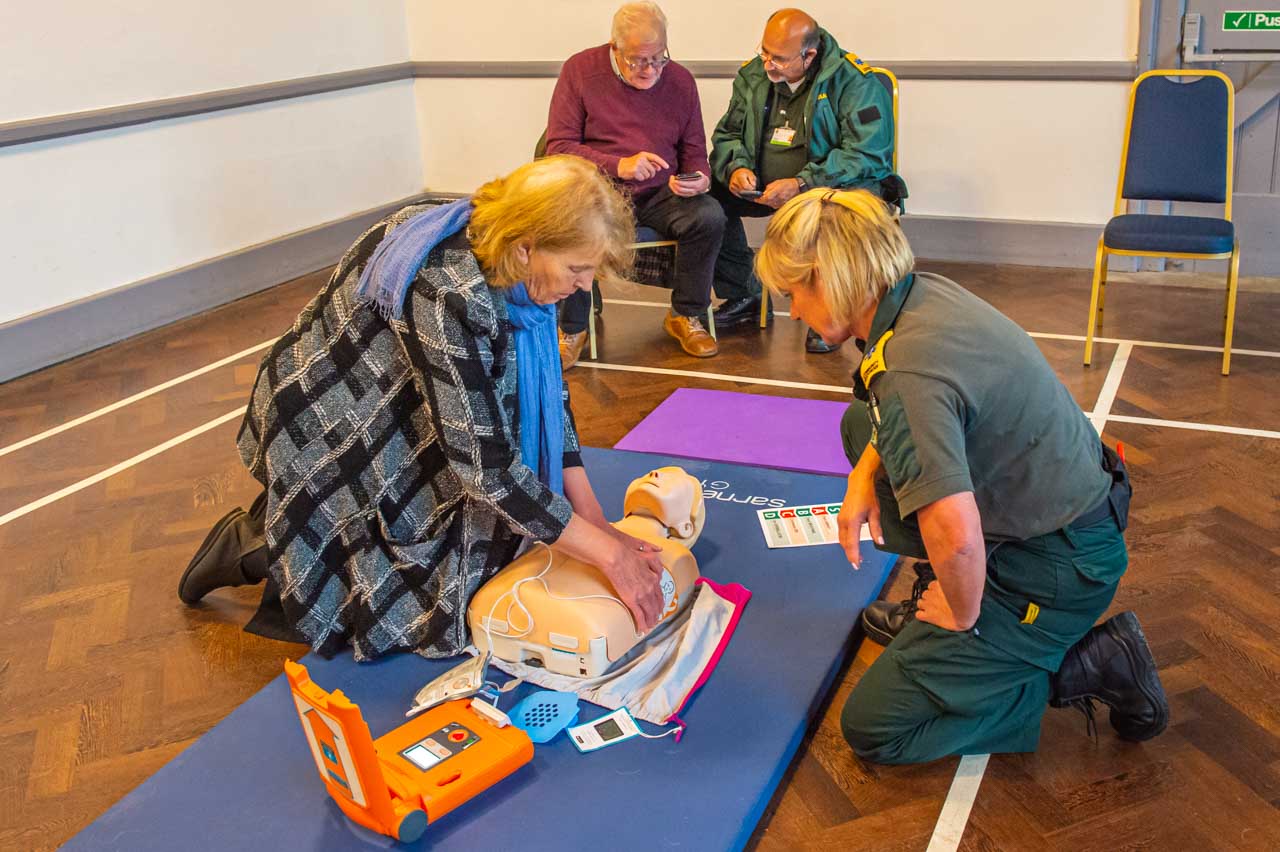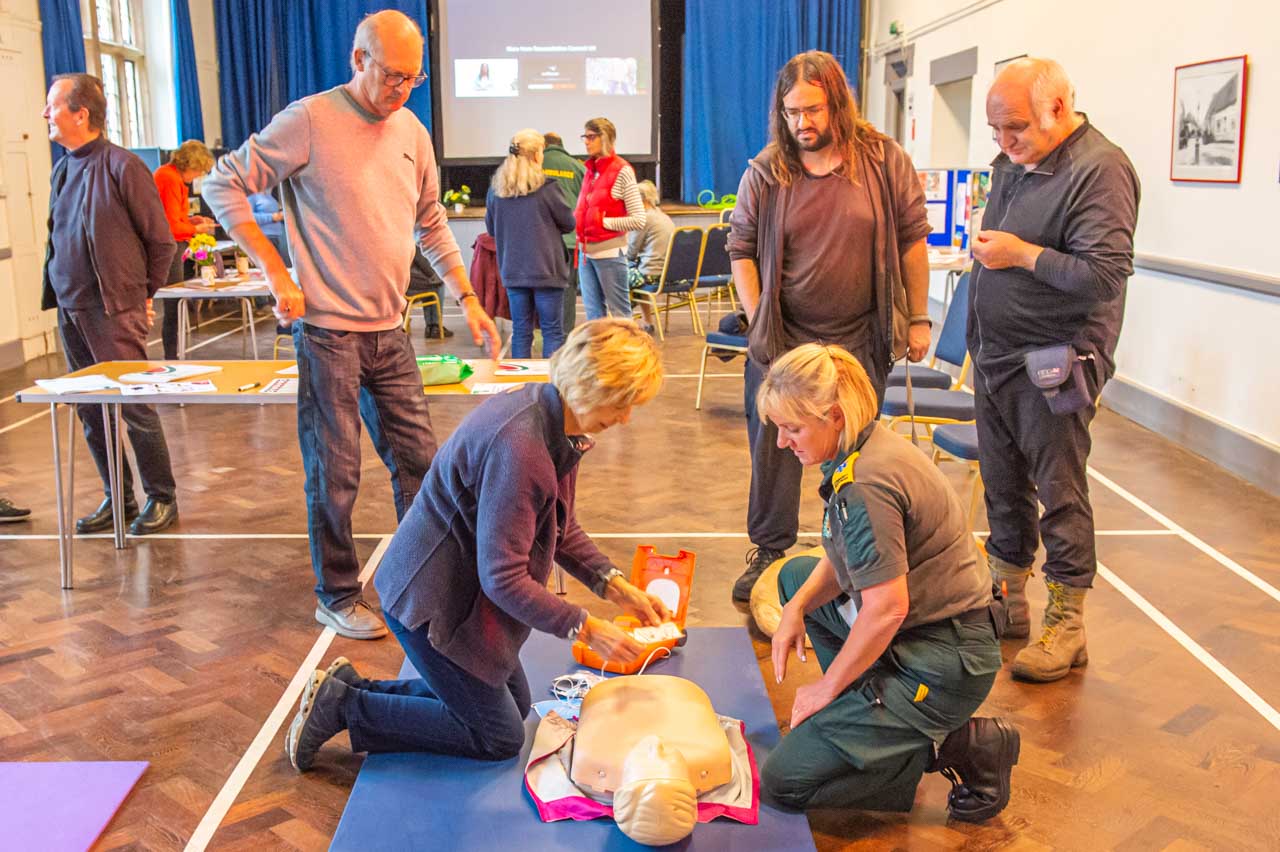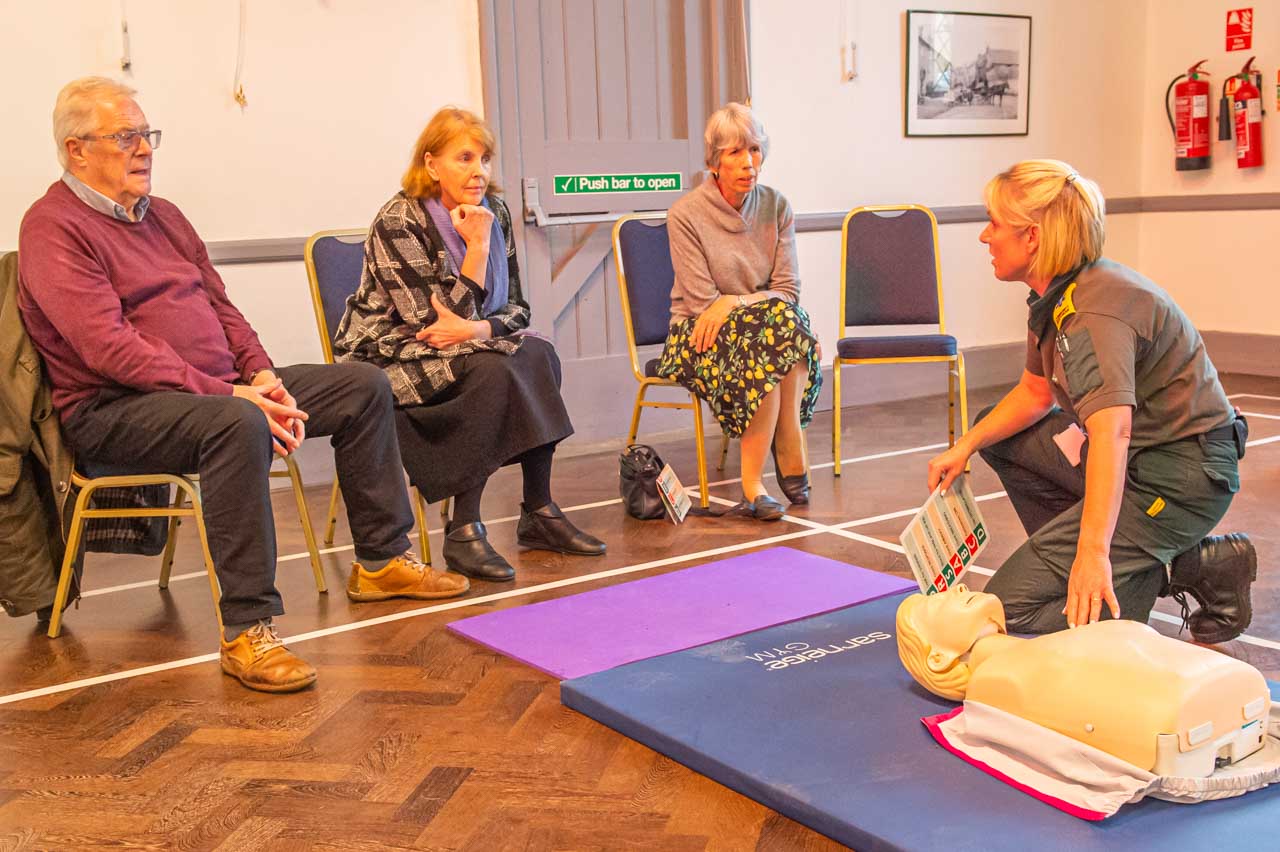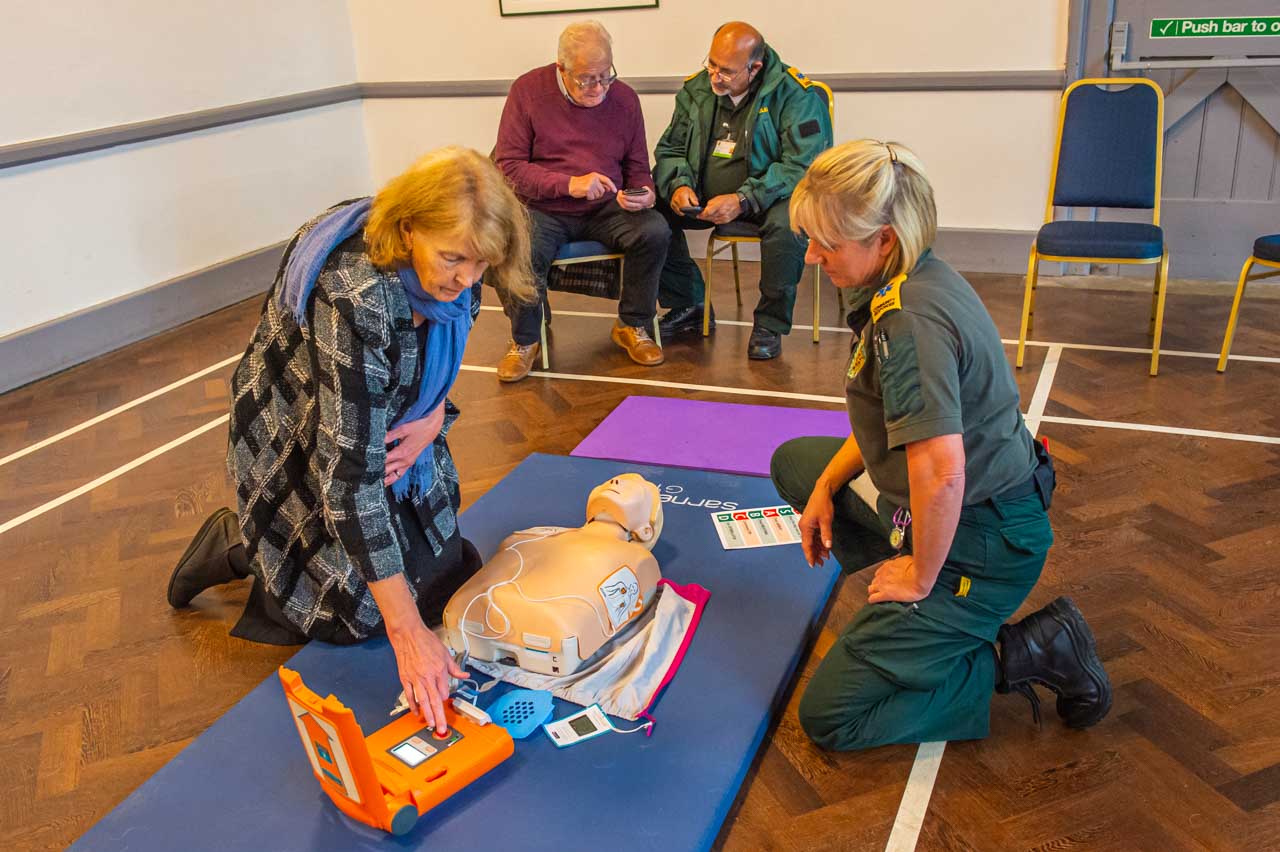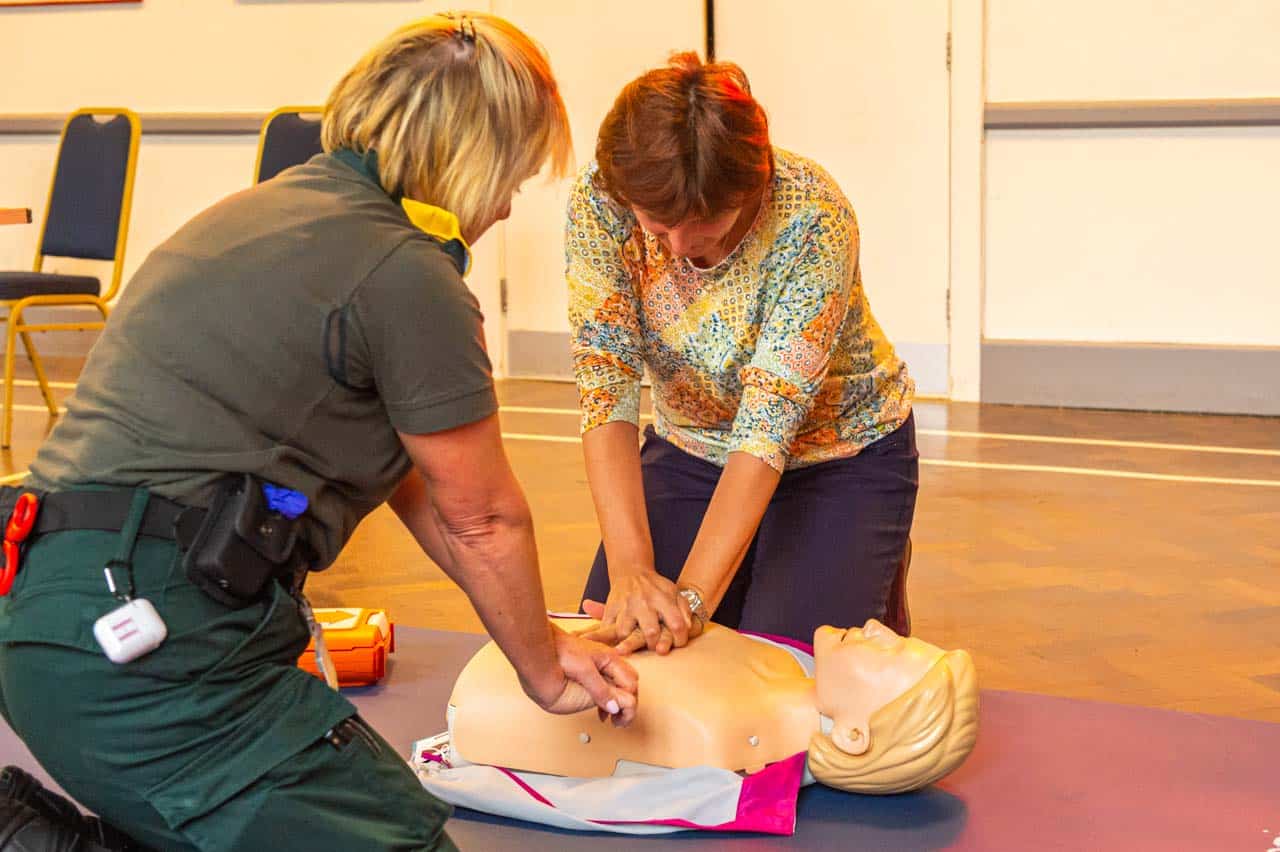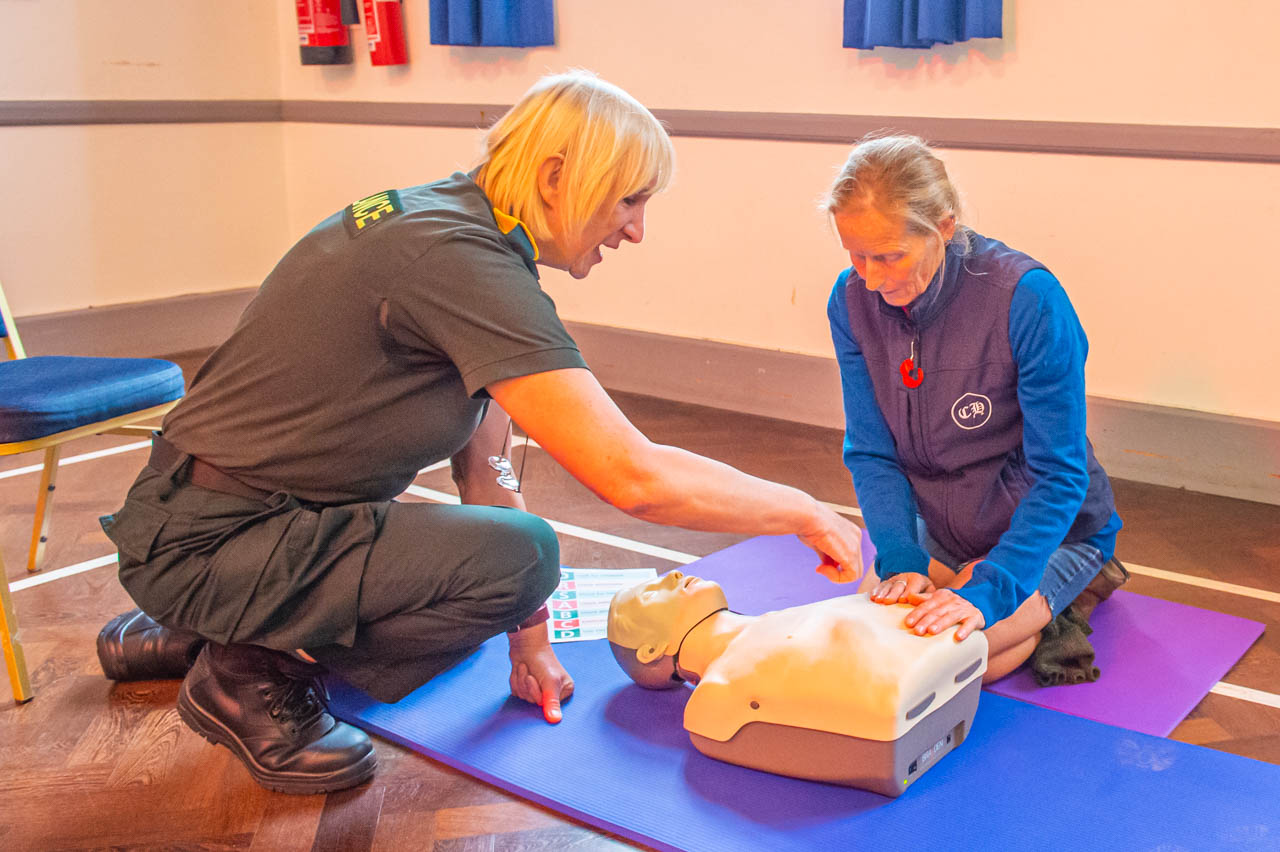CPR (Cardiopulmonary Resuscitation)
Learn CPR, act fast, save lives
When you first arrive at the scene, take the following steps to treat the casualty:
Look for DANGER – to yourself and to others
Check for a RESPONSE – Gently shake the person who has collapsed and speak to them.
SHOUT for HELP and CALL 999
- Keep them on loudspeaker, tell them the person is not breathing, they will help talk you through the process
- Know your location, consider downloading the What3Words App
- If you are not alone, send someone to get a Defibrillator
Then apply the following sequence of actions:
The following information and guidance is from the South Western Ambulance Service NHS Foundation Trust and The Resuscitation Council UK
Plan Ahead
- Know your Exact Location – Download What3Words
- Learn CPR
- Find your Nearest Defibrillator – for Cattistock it is in the red phone box next to the Fox & Hounds pub
Key Messages:
- A cardiac arrest is when the heart’s electrical supply is interrupted resulting in the heart stopping pumping blood around the body.
- The heart is a pump, which supplies oxygenated blood to all of the body, which is vital for bodily function.
- If someone’s had a cardiac arrest, they’ll be unconscious, not breathing or not breathing normally. Call 999 immediately.
- A cardiac arrest is when the heart stops beating. This is not the same as a heart attack, although a heart attack may lead to a cardiac arrest.
- All the cells of the body require oxygen and nutrients to survive. Oxygen and nutrients are carried round the body in your blood, which is pumped by your heart.
- If a cardiac arrest occurs, blood will stop circulating around the body. Breathing will also cease as well though it may not stop completely for several minutes. Without a supply of oxygen, the cells in the body start to die. Brain cells are incredibly sensitive. After about three to four minutes of no oxygen, brain cells will begin dying, leading to brain damage and death.
- The purpose of CPR is to keep oxygenated blood flowing around the body to keep the vital organs alive.
- CPR itself will not restart someone’s heart; it just keeps them alive until a defibrillator arrives. A defibrillator is a device that delivers an electrical shock to the heart to restart it.
- Over 30,000 people suffer cardiac arrests outside of hospital in the UK every year. If this happens in front of a bystander who starts CPR immediately before the arrival of the ambulance, the victim’s chances of survival double or triple.
- Chain of Survival – Early Recognition, Early CPR, Early Call for Help, Early Defibrillation. A chain is only as strong as its weakest link. Bystander intervention is vital to improve outcomes.
- Compressions should be at the rate 100-120 per minute, 5-6 cm compressing the chest and a ratio of 30 compressions to two breaths for adults (when permitted) pressing on the centre of the chest between the nipples. Chest compressions and ventilations slow down the rate of deterioration of the brain and heart. If a bystander is unwilling to do mouth-to-mouth, hands-only CPR is fine.
- With each minute’s delay of delivering a defibrillation shock to a shockable cardiac arrest, the chances of survival decrease by 10-12%.
To learn how to perform CPR, watch the following short animation video produced by The Resuscitation Council UK
The following are useful documents from Resuscitation UK, emphasising our need for CPR.
Please expand the centre poster, scan the heart shaped QR code, then download and carry your own personal remainder of how to save a life.

